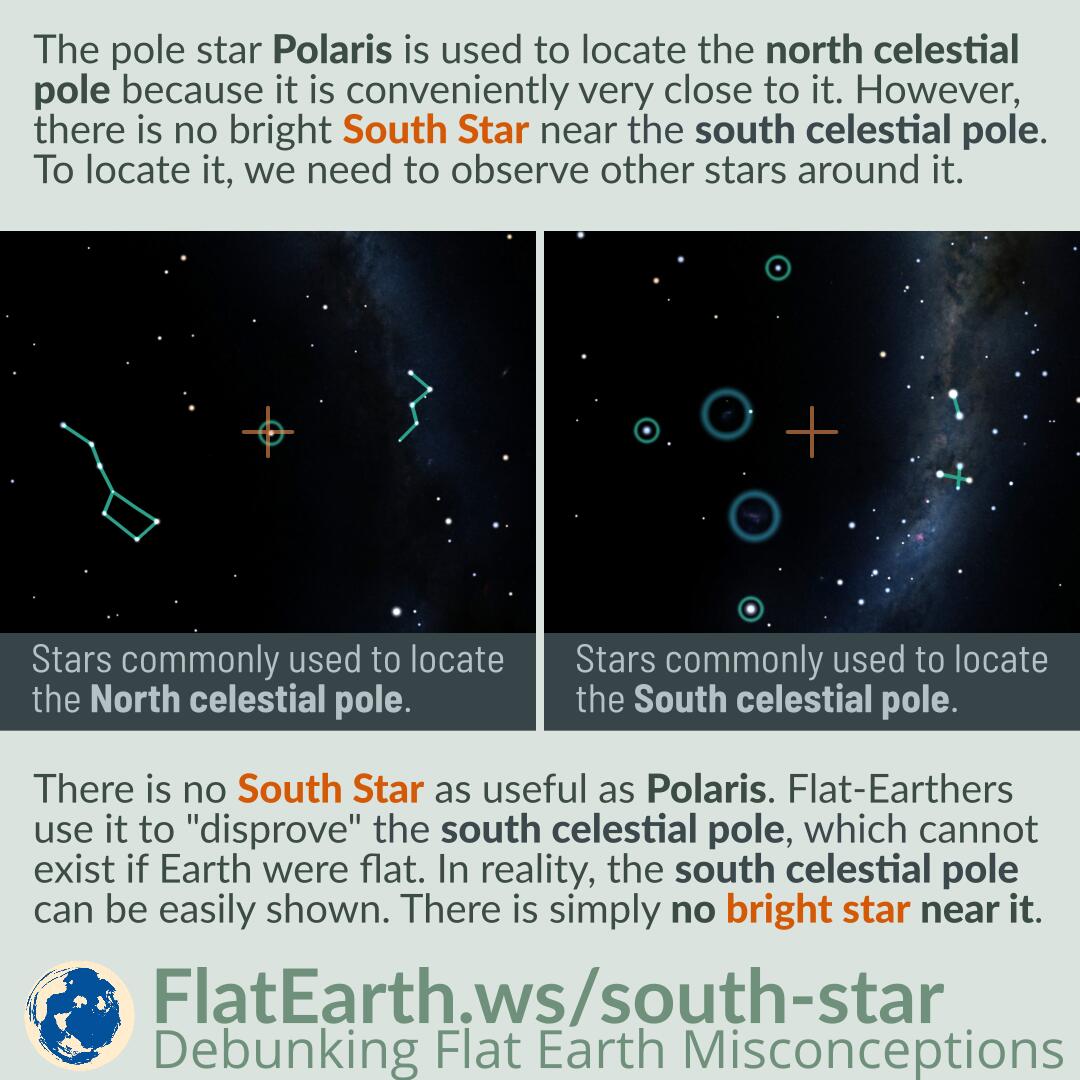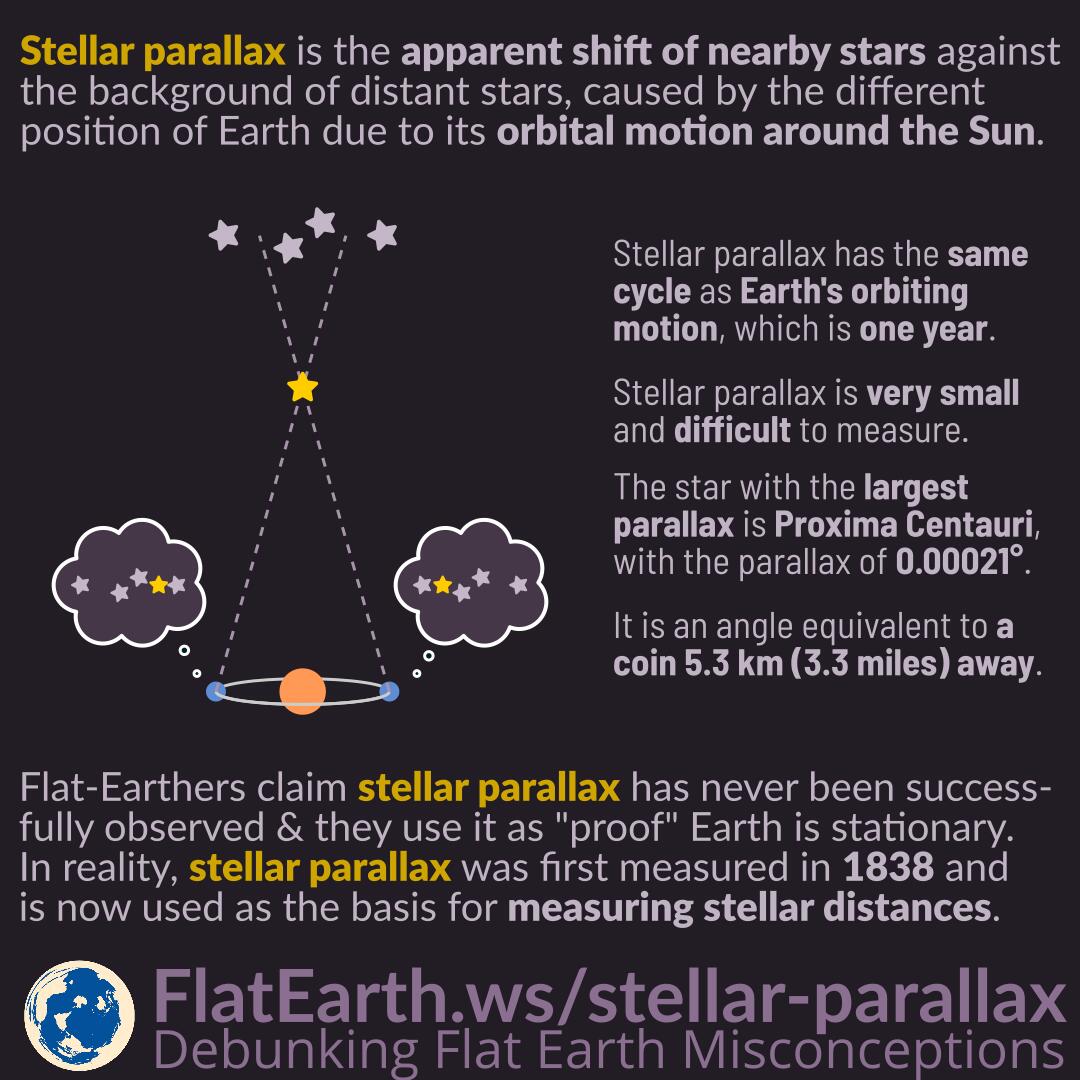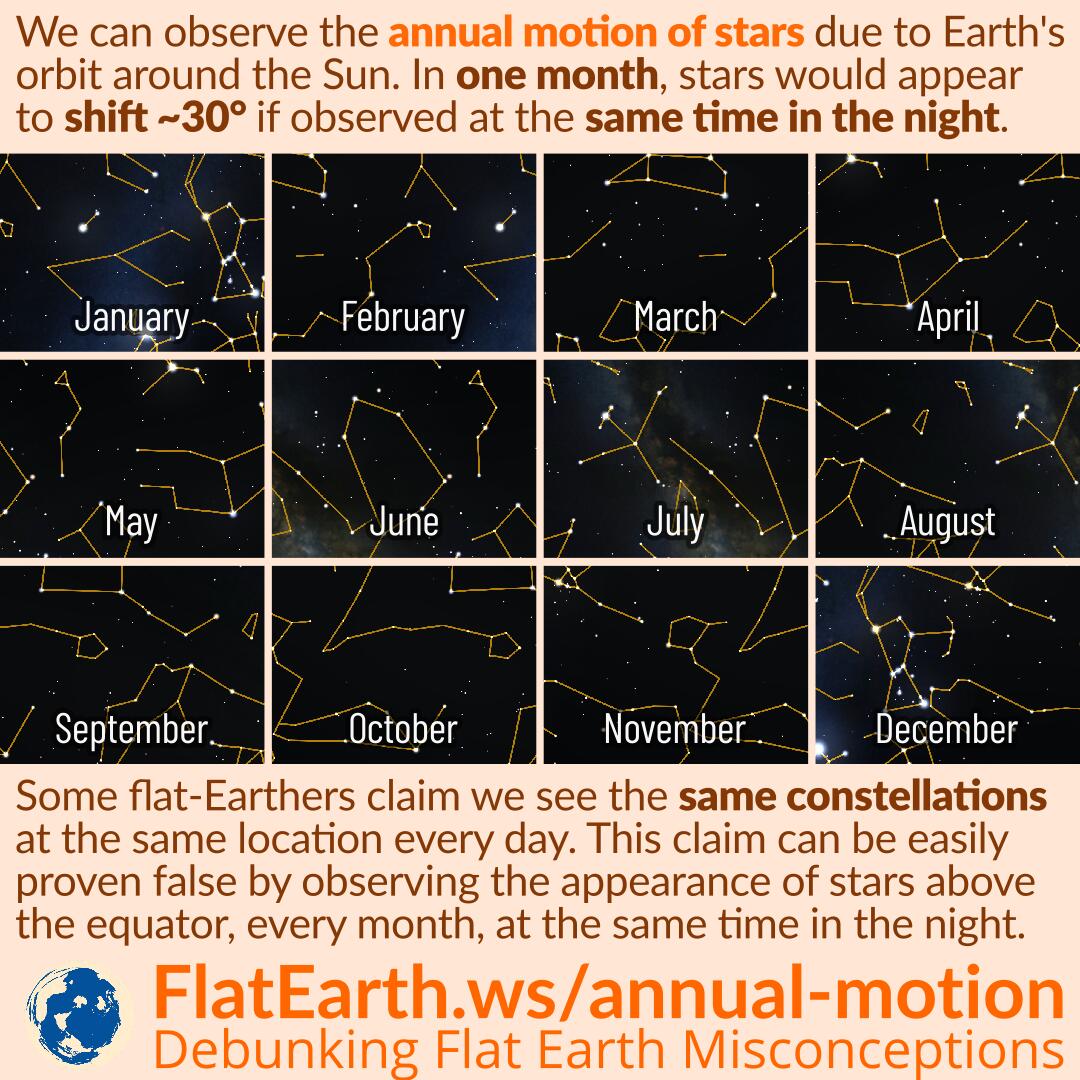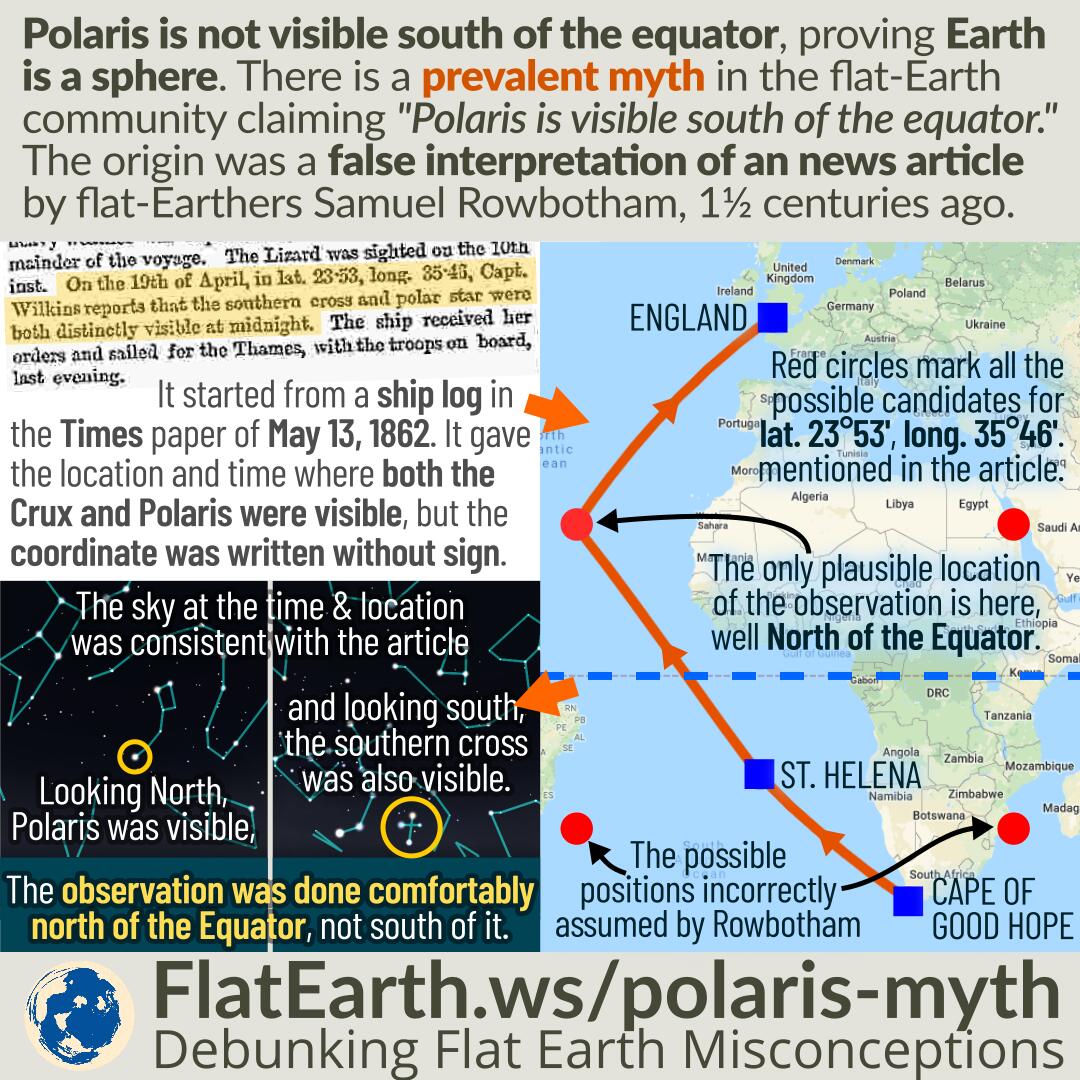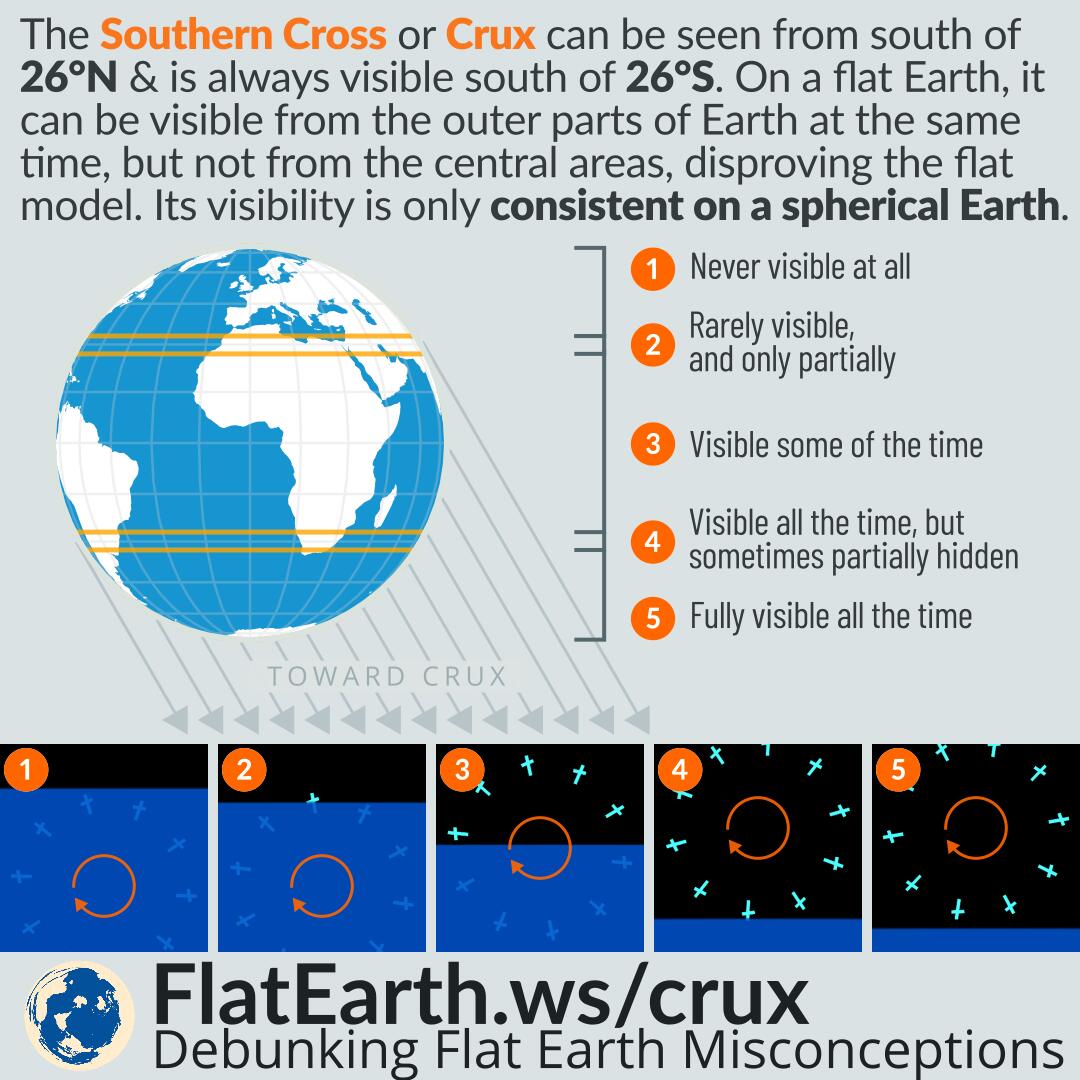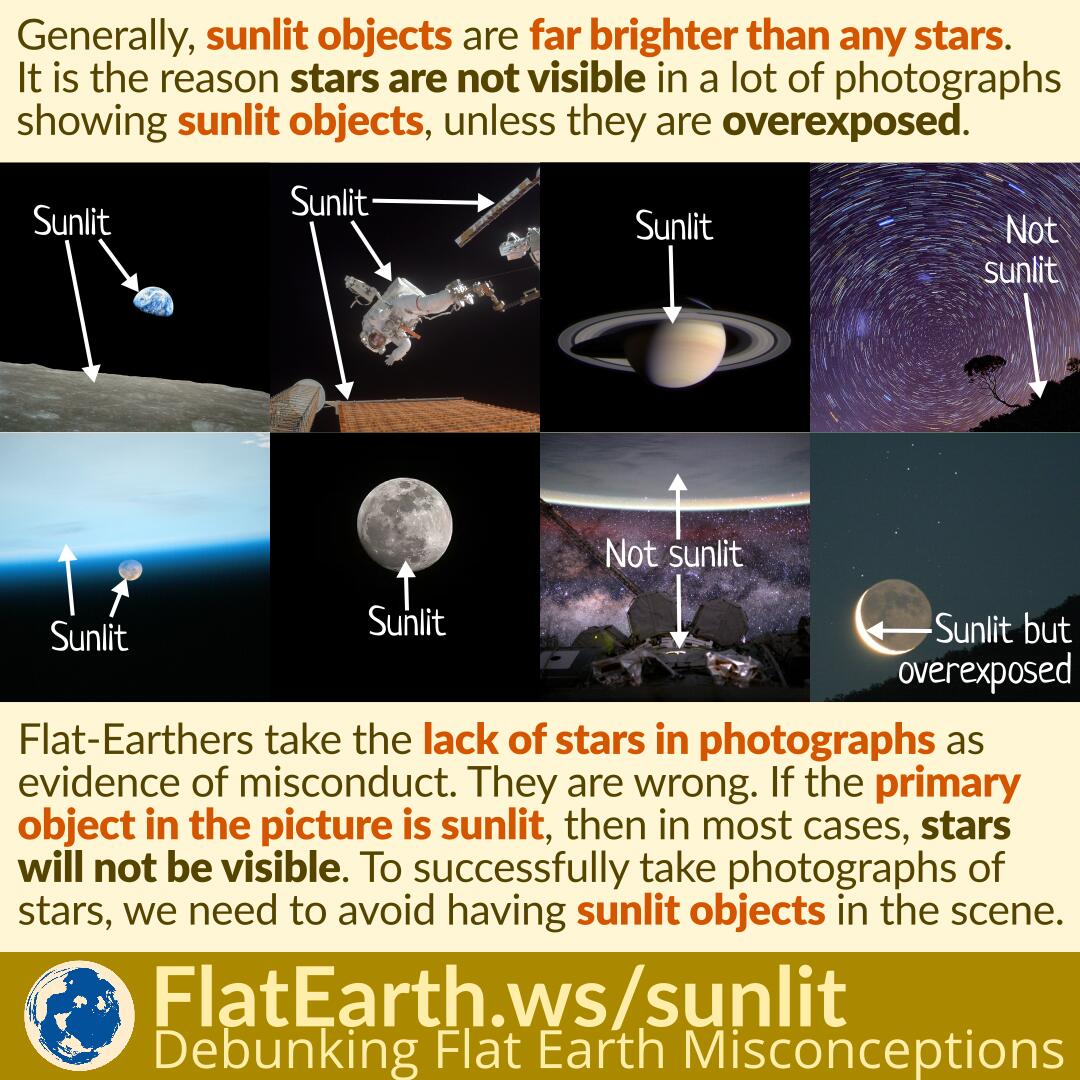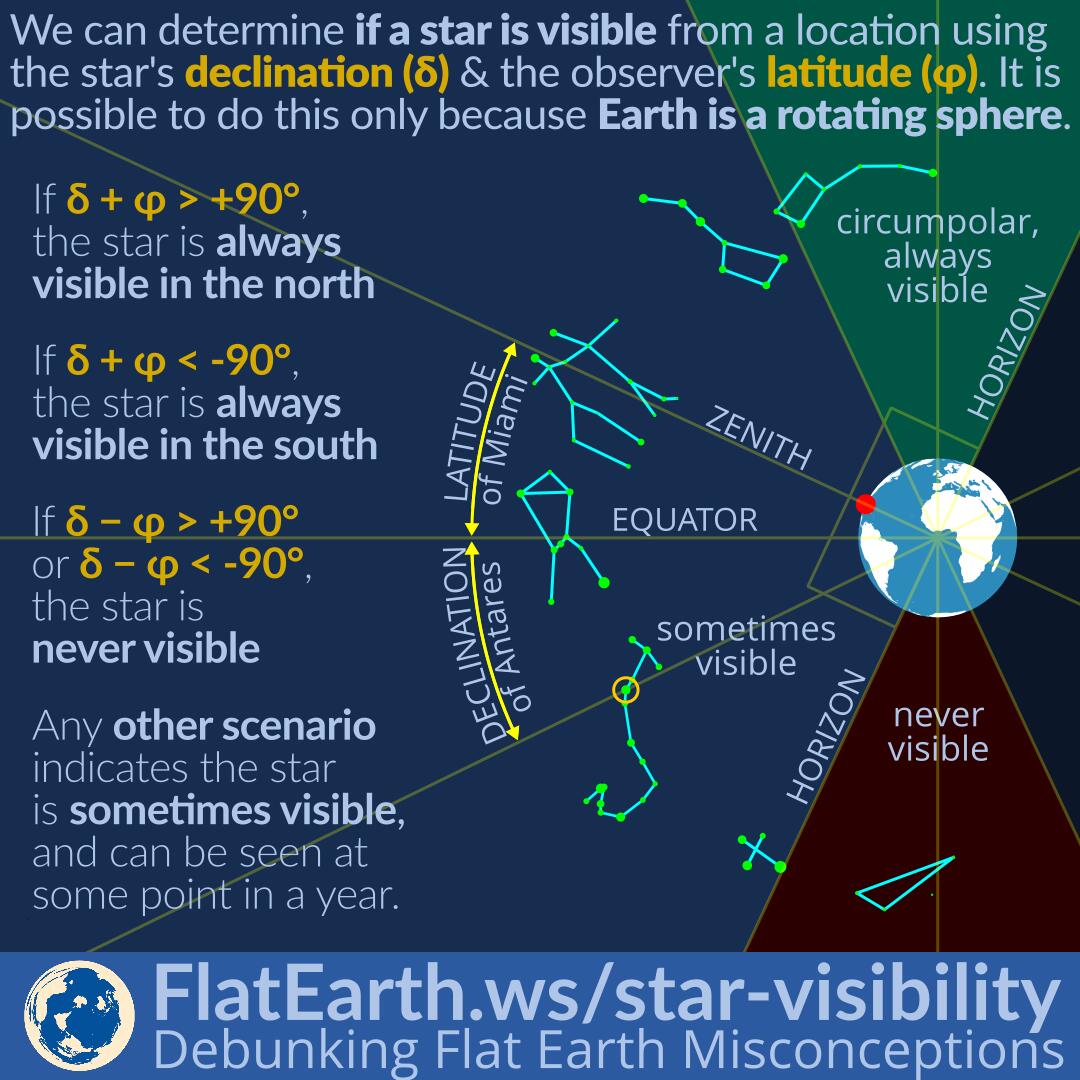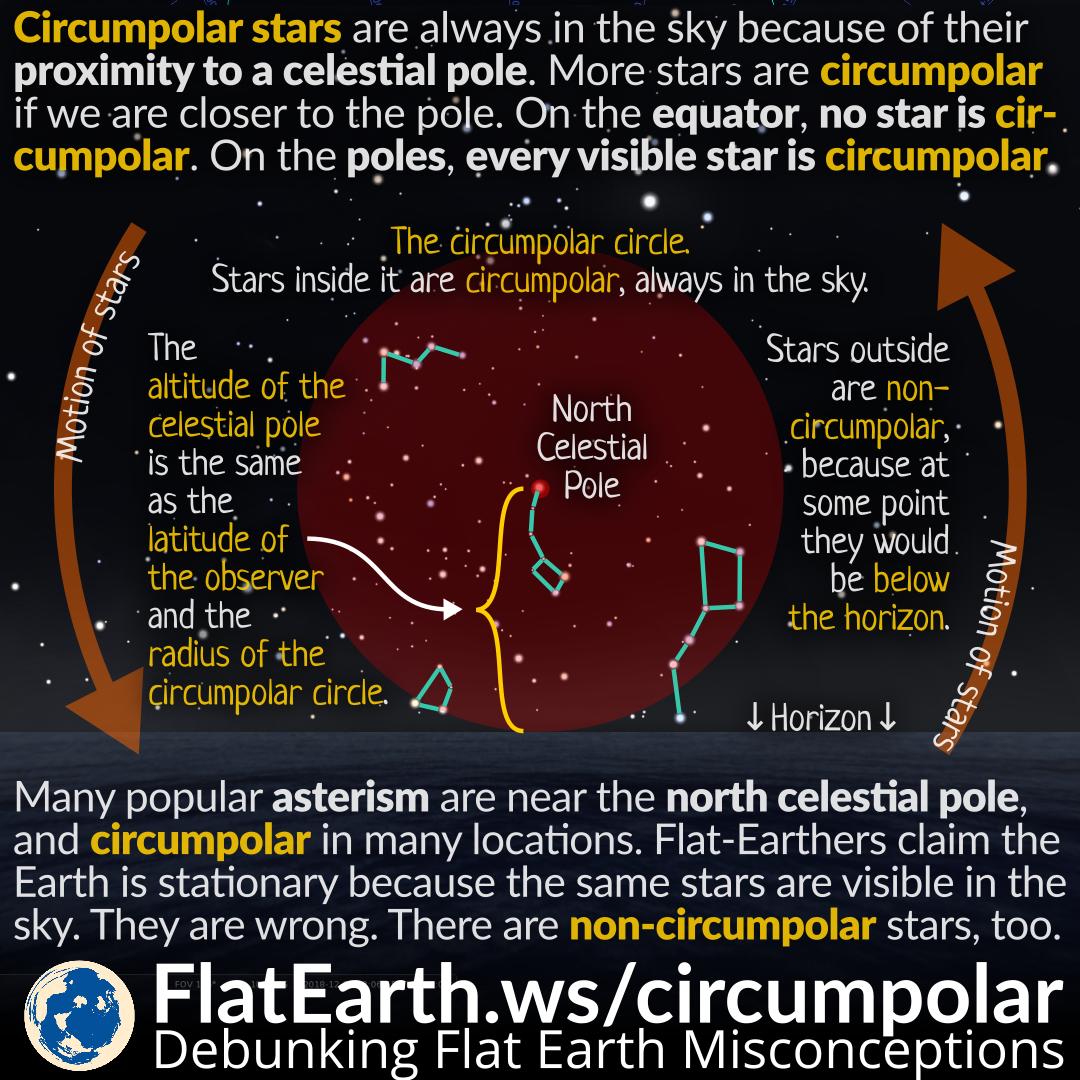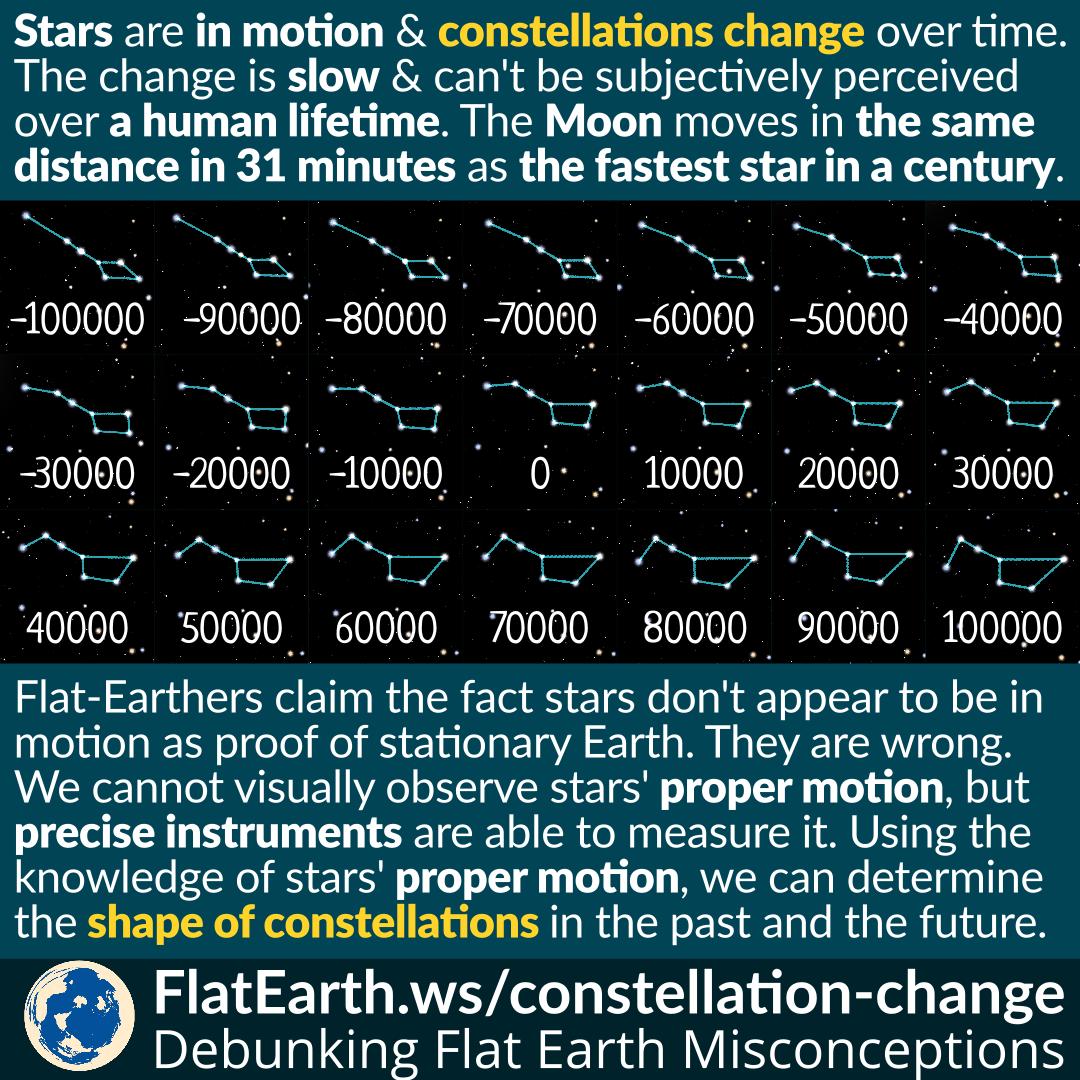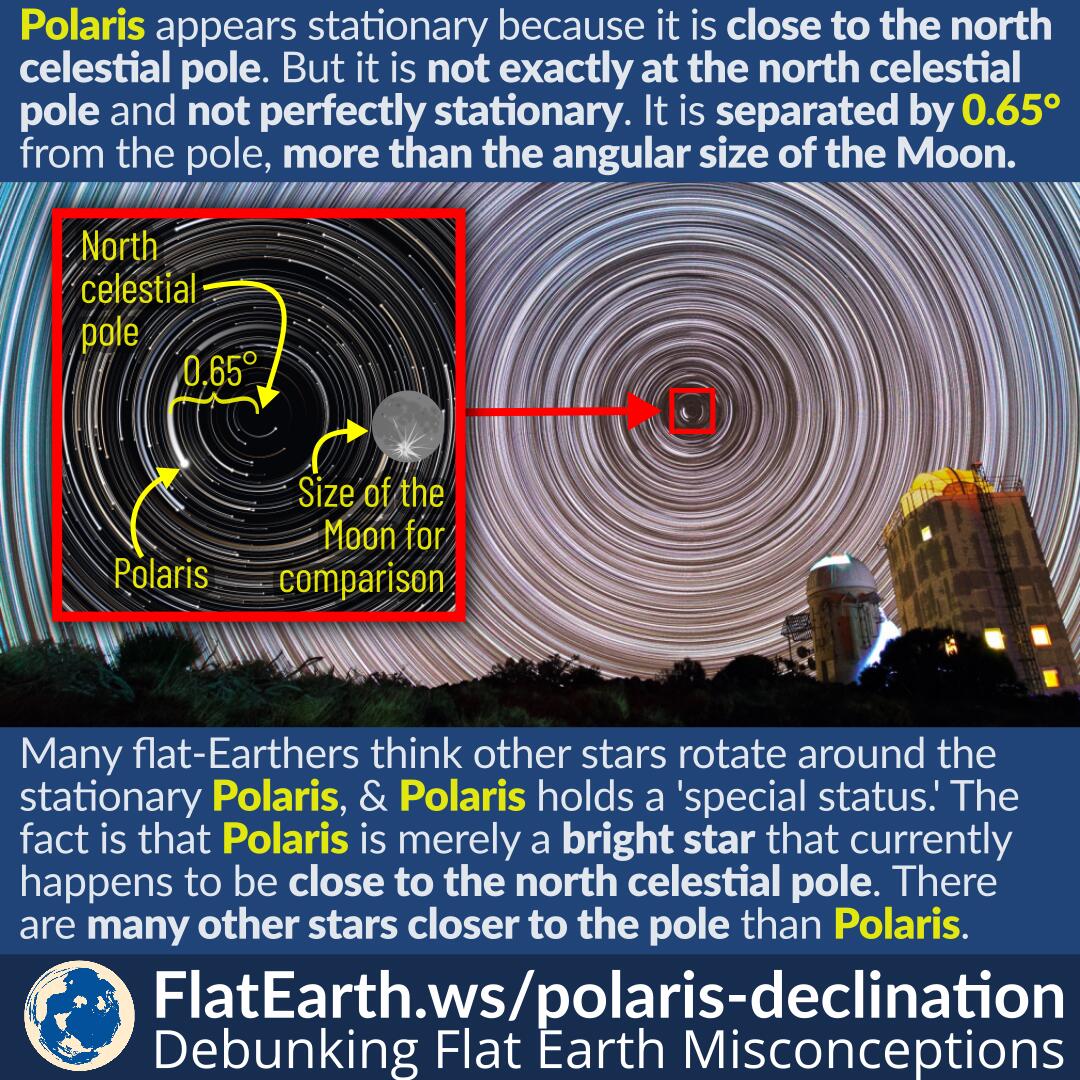The pole star Polaris is used to locate the position of the north celestial pole because it is a bright star that is conveniently located very close to it. However, there is no corresponding bright South Star near the south celestial pole. To locate the south celestial pole, we need to observe stars around it.
There is no South Star as useful as Polaris in the north. Flat-Earthers use it to “disprove” the existence of the south celestial pole, which cannot possibly exist if Earth were flat. In reality, the south celestial pole can be easily shown and located. There is simply no bright star near it.


